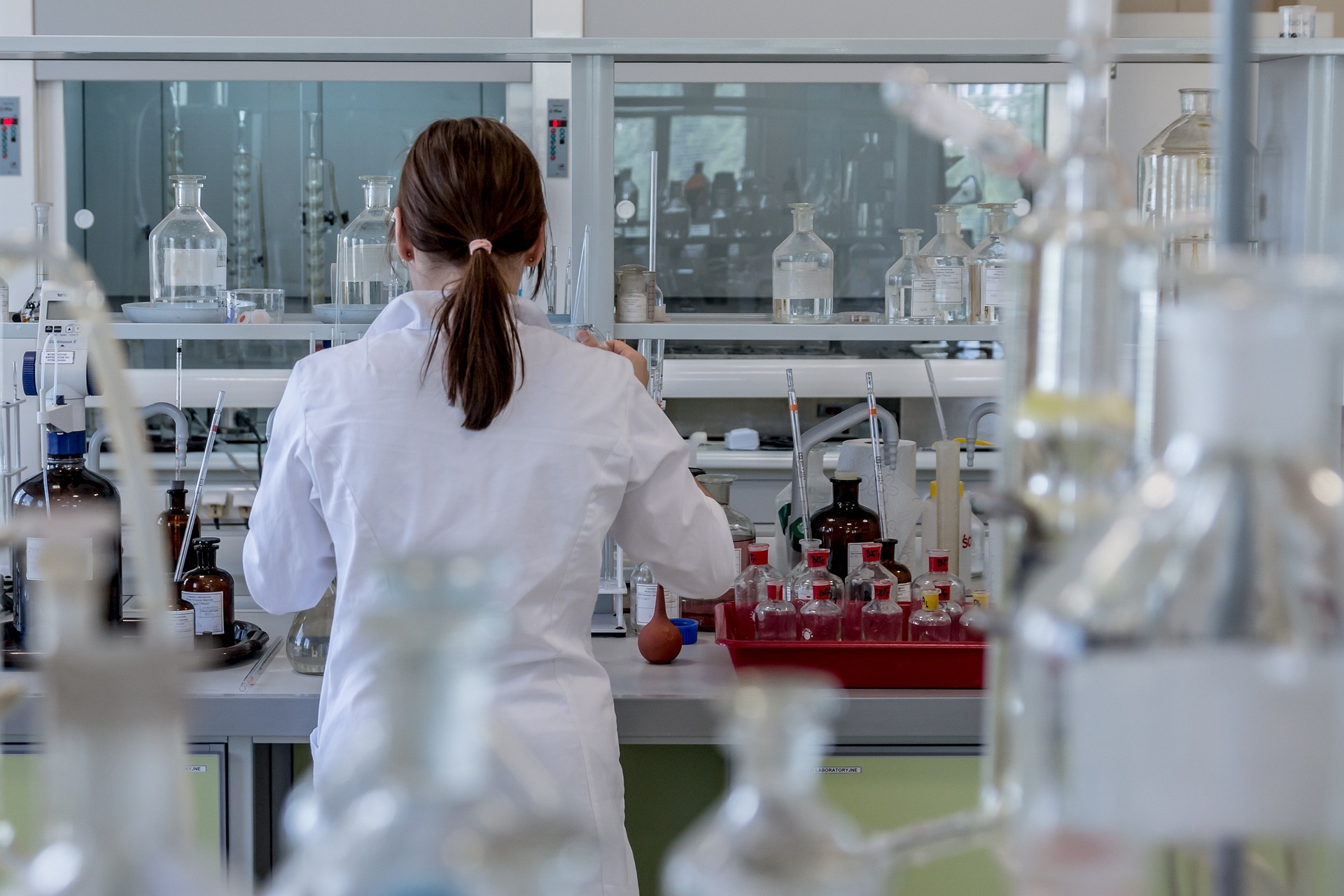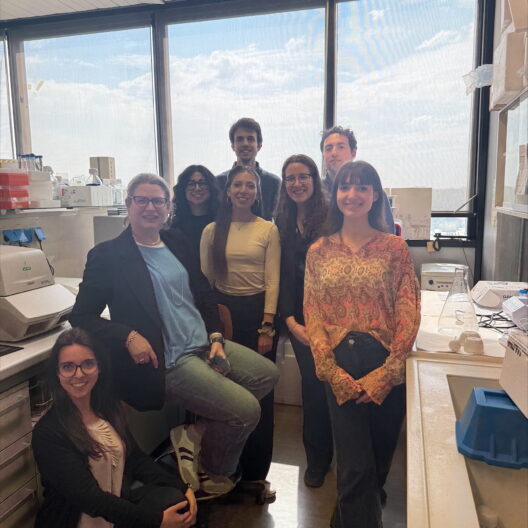
Inside the esposoma: health, city and future
Reading time
0 min
Gloria Bertoli guides us on a journey between science, the environment, and personalized medicine
What does urban biodiversity have to do with our daily health? And why will the medicine of the future have to take into account the environment in which we live, the quality of our food, the air we breathe, and even the condition of our neighborhood? To answer these questions, we interviewed Gloria Bertoli, director of the Institute of Bioimaging and Complex Biological Systems at CNR and co-leader of NBFC’s Spoke 6. The interview is a real journey inside the concept of “esposome,” a technical term that is fundamental to understanding how every stimulus we receive affects our health. The topic is as much scientific as human, and has profound implications not only in the clinical field, but also in the social, environmental, and economic spheres.
Protagonists of the interview
Gloria Rita
Bertoli
- Cell and molecular biologist
- CNR Institute of Bioimaging and Complex Biological Systems
- gloriarita.bertoli@cnr.it Copia indirizzo email
NBFC and urban biodiversity: a multidisciplinary approach
Dr. Bertoli, where did your project come from and what is its main goal?
“Our work fits into the larger NBFC project. In particular, I coordinate Spoke 6 with my colleague Hellas Cena. The project involves more than 300 male and female researchers with very different skills – from mathematics to medicine, via physics, bioinformatics and biotechnology. And it is precisely this multidisciplinarity that is one of NBFC’s strengths. Spoke 6’s field of study is the urban area, chosen not at random: 63 percent of Italians live in cities, and often the urban environment is synonymous with pollution, stress and unhealthy lifestyles. The goal is ambitious: to enhance urban biodiversity and understand itsimpact on health. We can only do this by understanding how the esposome impacts our well-being.”
What is exposome and why is it so important
Let’s get into the heart of his work: what is the esposome?
“The esposome is the set of stimuli, external and internal, to which we are exposed throughout our lives. We’re talking about environmental, dietary, psychological, social factors–all of which can influence our biology at the molecular level.”
Can you give us a concrete example?
“Sure. We think about pollution, sunlight, diet, sports activity, of course alcohol and smoking, stress level — but also income or education. Everything we encounter every day-the air we breathe, the foods we eat, the neighborhood we live in-contributes to our state of health or disease. It sounds unbelievable, but billions of cells respond to stimuli from the exposome by modulating the expression of specific molecules that can affect our state of well-being or health. In Milan, for example, people living in the suburbs often have access to poorer food because of their reduced income. And this results in a deficiency of macro- and micronutrients, with health consequences. Medicine can no longer ignore the impact of these factors.”
“Many therapies are based on statistics: if they work on 80 percent of patients, they are fine. But we want to get to the point where we can treat even those 20 percent who remain on the margins today.”
Gloria Bertoli
The internal exposome and the role of the microbiota
There is then an internal exposome, is that correct?
“That’s right. We are talking about all those molecules that play a role in chronic inflammation, and oxidative stress, and can affect metabolism; among them, many originate from a key element present in our body, the gut microbiota. The microbiota is the set of microorganisms living in our gut that are even more numerous than our cells.”
What role does the microbiota play in our health?
“Fundamental. In addition to turning food into useful molecules, it regulates immune and inflammatory processes. If the balance between various microbial populations is altered, or if there is a change in the number of members of one population versus another, the risk is to compromise the whole system, promoting chronic or degenerative diseases.”
Toward personalized medicine
Another area he works on is transcriptomics. What is it all about?
” Transcriptomics studies everything that the cell reads in the DNA and turns into functional molecules. So we analyze these molecules looking for markers. Specifically, we are looking for molecules that can predict, in some way, the health status of the individual. A healthy individual will have certain markers; in the diseased individual, the same markers will be profoundly altered (increased to excess or minimized) in expression levels. This imbalance alters the functions of a cell or tissue. Many of the nonhereditary diseases (oncological, metabolic, or neurogenerative) share a common characterizing basis, namely increased levels of oxidative stress and inflammation. Identifying the key molecular and epigenetic factors that characterize these two aspects means finding markers that we can work on from the outside. And through the study of these molecules associated with oxidative stress and inflammation we can also see how the exposome we mentioned earlier impacts our health status.”
In what direction are you going?
“Toward personalized medicine. Imagine a woman whose mammogram has detected a suspicious mass. In the future, before we get to biopsy, a molecular screening could tell us what type of tumor it is. This would allow the oncologist to choose the most targeted treatment right away. We would no longer have “one-size-fits-all” treatment, but custom-built. Today many therapies are based on statistics: if they work on 80 percent of patients, they are fine. But we want to get to the point where we can treat even those 20 percent who remain on the margins today.”

Biodiversity and health: an inseparable link
What is the connection between this and urban biodiversity?
“A disease is not just a mistake in a chemical reaction. It is also the result of the environment in which we live. A city that is devoid of greenery, chaotic, noisy and polluted exposes the citizen to continuous oxidative stress, causing at the molecular level an increase in cortisol, which for example has an effect on our metabolism, our search for food and increases obesity and metabolic diseases. That’s why we promote a different, greener, more connected, more human-scale urban model.”
So urban planning becomes a public health issue?
“Absolutely. Good urban planning can reduce the risk of disease. Walkable neighborhoods, efficient transportation networks, green spaces and access to healthy food are crucial prevention tools. Similarly , the workplace should also give us positive stimuli: greenery around and inside offices, proper natural lighting, reduced background noise, are all elements that on an unconscious level work on our mental and physical well-being.”
Impacts on the business world
Can all this also affect businesses?
And how! Think rapid, low-cost health monitoring tests, supplements calibrated to age and lifestyle, functional foods designed based on individual needs. Or technologies to map environmental stress in the city. The future is already here-it just needs the will to invest in it.
Looking to the future: health and biodiversity for the next generation
How do you envision the future of your research field?
I am thinking of an increasingly preventive and less invasive medicine, where we treat before the disease even manifests itself. Where the health of the individual is read systemically, that is, considering body, mind and environment. I believe that our work has a strong ethical and social value. There is so much to do, both for us and for younger people. Let’s not forget that since 2022 our Constitution also says so , in Article 9: The Italian Republic “Protects the environment, biodiversity and ecosystems, also in the interest of future generations.”

